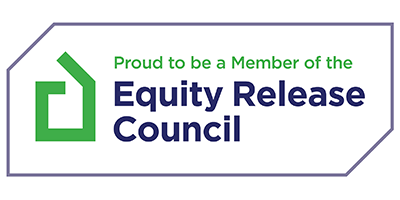In this article
If you’re considering purchasing a House in Multiple Occupation (HMO), a bridging loan could be an ideal solution to secure the property quickly.
A bridging loan for a HMO is a short-term finance option designed to ‘bridge’ the gap until you can secure a more permanent form of finance, such as an HMO mortgage.
This guide will walk you through the process of obtaining a bridging loan for a HMO, covering essential steps and considerations to ensure you make an informed decision.
Understanding Bridging Loans and HMO Mortgages
Before delving into the specifics of getting a bridging loan for a HMO, it’s important to understand what these terms mean.
A bridging loan is a short-term loan typically used to cover temporary financial needs, such as purchasing a property before selling an existing one. Bridging loans are often secured against the property and are usually repaid within 12 months.
On the other hand, an HMO is a property rented out by at least three people who are not from one household but share facilities like the bathroom and kitchen.
An HMO mortgage is a specialised mortgage product designed for landlords who wish to purchase or refinance HMOs.
Speak to an Advisor – It’s Free!
Schedule a free callback from one of our experts today.
- All situations considered
- Transparent and honest mortgage advice
- We search 1000s of purchase and remortgage deals
Our customers rate us 4.9/5
Why Consider a Bridging Loan for a HMO?
There are several reasons why a bridging loan might be an attractive option for financing a HMO.
- Speed: Bridging loans can be arranged quickly, often within a few days. This is crucial if you need to move fast to secure a property.
- Flexibility: Bridging loans can be tailored to meet your specific needs, with various repayment options available.
- Short-term Solution: If you’re waiting for an HMO mortgage to be approved or are in the process of renovating the property to meet HMO standards, a bridging loan can provide the necessary funds in the interim.
Steps to Secure a Bridging Loan for a HMO
Assess Your Financial Situation
Before applying for a bridging loan, it’s essential to evaluate your financial situation. Calculate the total amount you need, including the property purchase price, renovation costs, and any additional fees.
It’s also important to have a clear repayment plan in place, whether through remortgaging with an HMO mortgage or selling another property.
Speak to a Mortgage Broker
Rather than approaching lenders directly, consider speaking to a mortgage broker who specialises in bridging loans and HMO financing.
A broker can help you navigate the market, compare various options, and find the best deal tailored to your needs. They will have access to a wide range of lenders and can negotiate terms on your behalf, potentially saving you time and money.
Prepare Your Application
To apply for a bridging loan, you’ll need to provide detailed information about the property, your financial situation, and your plans for repayment. Common requirements include:
- Property Details: Valuation reports, purchase price, and any renovation plans.
- Financial Information: Proof of income, existing debts, and credit history.
- Exit Strategy: A clear plan for repaying the loan, such as remortgaging with an HMO mortgage or selling the property.
Submit Your Application
Once you have all the necessary documents, your mortgage broker will assist you in submitting your application to the chosen lender.
The lender will assess your application, conduct a property valuation, and perform due diligence checks. This process can be expedited if you have all your documentation in order and respond promptly to any queries.
Approval and Funds Release
If your application is approved, the lender will provide you with a formal offer. Review the terms carefully and ensure you understand all the conditions. Upon acceptance, the funds will be released, allowing you to proceed with the property purchase or renovations.
Key Considerations When Applying for a Bridging Loan
Interest Rates and Fees
Bridging loans typically come with higher interest rates compared to traditional mortgages due to their short-term nature.
Additionally, there may be various fees involved, such as arrangement fees, valuation fees, and exit fees. It’s crucial to factor these costs into your overall financial planning.
Loan-to-Value Ratio (LTV)
The loan-to-value ratio is a critical aspect of bridging loans. It determines the maximum amount you can borrow against the value of the property. Lenders usually offer LTVs of up to 75%, but this can vary based on individual circumstances and the lender’s criteria.
Repayment Plan
Having a clear and realistic repayment plan is essential when taking out a bridging loan. Whether you intend to remortgage with an HMO mortgage or sell the property, ensure your plan is feasible within the loan term to avoid financial difficulties.
Legal and Regulatory Requirements
HMOs are subject to specific regulations and licensing requirements, which vary by local authority.
Ensure the property meets all necessary standards and obtain the required licences before proceeding. Failure to comply with these regulations can result in hefty fines and legal issues.
Transitioning from a Bridging Loan to an HMO Mortgage
Once your HMO is ready and generating rental income, you can start looking into long-term financing options.
An HMO mortgage will generally offer lower interest rates and longer repayment terms compared to a bridging loan. Begin the process of remortgaging early to ensure a smooth transition and avoid any gaps in financing.
For personalised advice tailored to your specific situation, speak to a mortgage advisor who specialises in HMO financing. They can help you navigate the complexities and find the best financial solution for your needs.








